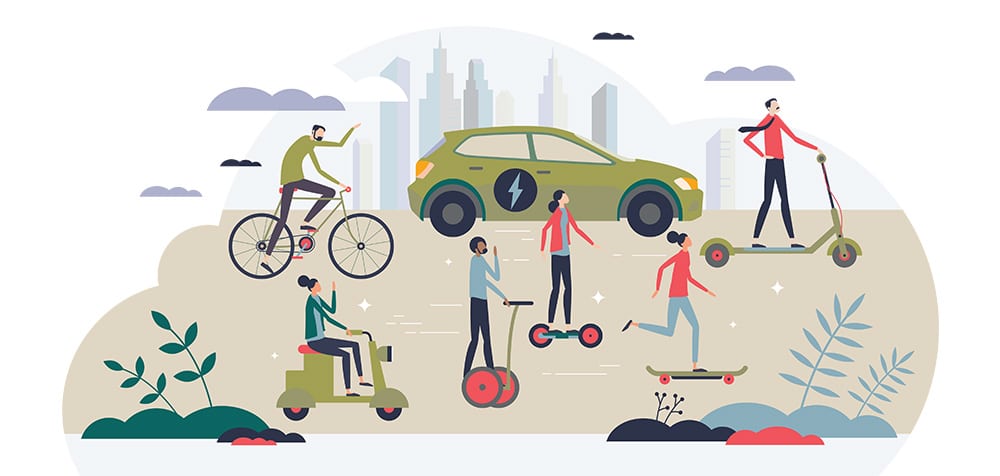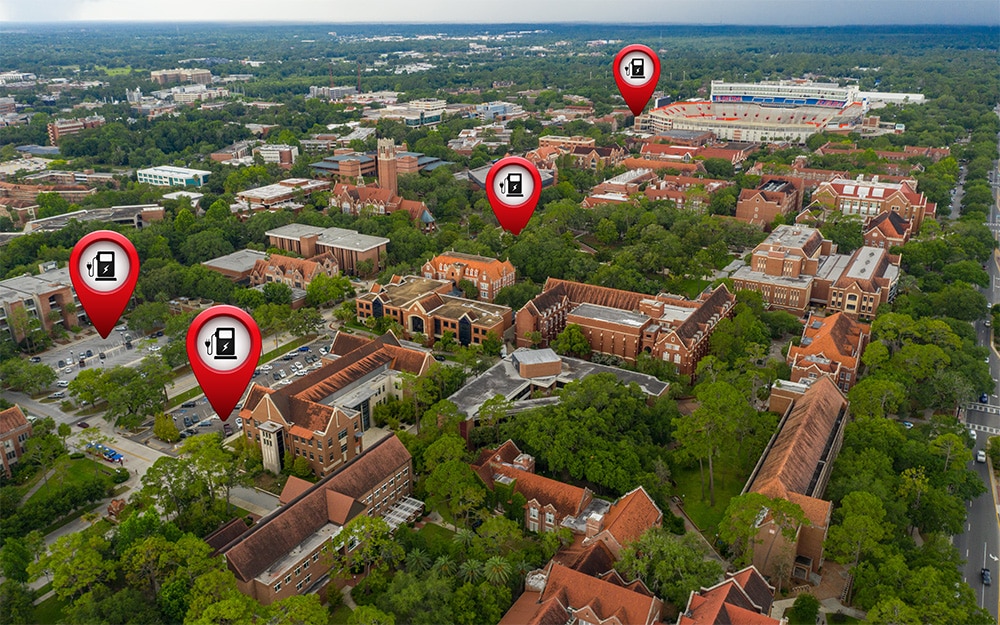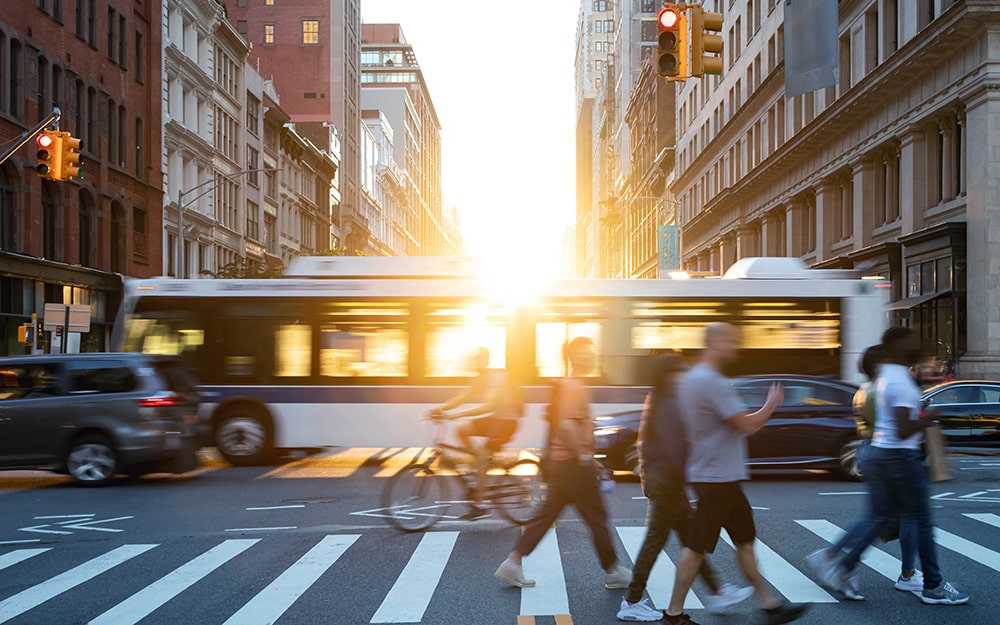Home » The Green Impact » Get to the Point
The Green Impact
Get to the Point
stock.adobe.com / VectorMine
Linking Multimodal Connections
In our practice as parking and transportation planners, the most common argument against reducing parking requirements and making driving incrementally less convenient is that “our city just isn’t set up to get around any other way.”
And that’s usually true.
But we still need to work toward more sustainable, enjoyable, and affordable places. That starts with investing in other ways of getting around. Many parking studies metastasize into broader mobility plans, precisely because communities are interested in linking parking reform to providing alternative transportation. Commonly we see support for walking, bicycling, transit, and other ways of travel offered only begrudgingly—seemingly with a sort of “driving for me, bussing for you” attitude. Public transit gets panned as dirty and slow. Riding a bike is rejected because it is considered unsafe and impractical for today’s high-octane, on-the-move families. Regardless of the reasons for dismissal, these modes of travel are relegated to the perilous sounding “captive user”.
Our contention is that this attitude is wrong. New means of travel are emerging regularly, and classic options such as a bus journey or going on foot are improving every day in ordinary communities. These modes of transit offer legitimate options for an increasing number of people to satisfy a wider range of travel needs.
Personal vehicles offer unrivaled, direct point-to-point connections, but with tremendous personal and social costs such as purchasing, fuel, insurance, emissions, noise, congestion, and on and on. Walking, biking, taking transit, and other modes reduce many of these costs, but often at the expense of a slower, less direct trip. Properly built—with bus priority, protected bike lanes, and the like—these modes can start to become more time-competitive. The next trick is to seamlessly link multiple alternatives modes together to provide connection options. Yes, it usually requires walking and a light rail ride, or scootering from a bus stop, to get to your destination. How do we reduce the barriers between these intrinsically co-dependent modes?
Seamless trip planning and payment is the key to the answer. Nowadays, everyone’s smartphone maps give you step-by-step instructions to walk to the bus stop, catch the bus, connect to a train, and walk from the station. Payment options need to link to all those steps. Los Angeles is one of several cities attempting to promote the use of multiple forms of transportation, without personal vehicles, by offering a debit card known as a “mobility wallet” to use for specific transportation modes. The pilot project serves low-income residents and is funded by the city and California Air Resources Board. Relative to the pilot’s success, it could help plant a seed for other cities and even universities to experiment and, potentially, help change attitudes and behaviors.
In areas where buses or other forms of mass transit may not be practical, mobility wallets could help support e-bicycle, e-scooter, or car and rideshare programs. Universities are frequently challenged to provide convenient parking close to their campus cores, just as cities are challenged with congestion closer to their city centers—all largely due to single-occupancy vehicles. A mobility wallet could become one way of promoting the use of less intrusive transportation for that last leg of a trip.
For universities, it could mean an option that guarantees parking, albeit in a remote lot, while taking a shuttle, scooter, or e-bike right up to a preferred academic building. For cities, it could not only have a massive benefit for residents who do not own vehicles, but also for that “last mile” commute that gets you into the heart of the city and right to the curb of the intended destination. A shift toward creating dedicated facilities for these newer forms of transit, such as bicycle storage, charging stations, and locker/shower areas could enhance their use both in cities and on campuses.
The notion of not knowing whether these forms of transportation are viable is a dated one. If you’ve ever used Uber or Lyft, you know where your driver is and how long it will take to arrive. Similarly, the same technology can easily be used to know where the closest scooter or e-bike is located, how far out your bus or subway car is, and when you can expect to arrive.
And isn’t that what we all really want—a more hassle-free way to travel so we can prioritize our time for ourselves, our families, and our work? ◆
Victor Hill, CAPP, MPA is a mobility and transportation planner with Walker Consultants, a member of IPMI's CAPP Certification Board, and a member of the IPMI Sustainable Mobility Task Force.
-
Victor Hill, CAPPhttps://parking-mobility-magazine.org/author/victor-hill-capp/April 22, 2022
-
Victor Hill, CAPPhttps://parking-mobility-magazine.org/author/victor-hill-capp/September 6, 2022
-
Victor Hill, CAPPhttps://parking-mobility-magazine.org/author/victor-hill-capp/October 4, 2023
Ben Weber, AICP, is a curb management, mobility, and parking planner at Walker Consultants.
-
This author does not have any more posts.

















